The IOC World Bird list proposed a number of unconventional bird names, most notably the Great Northern Loon (Gavia immer) and the Roughleg (Buteo lagopus). One proposed change was Angel Tern, a new name for the angelic White Tern. The name wasn’t proposed to settle a trans-Atlantic dispute like the previous two names, but instead merely in an effort to give this little species a suitably noble name. The name didn’t stick and the species went back to being the White Tern, but it’s a change I liked and would have been happy to see remain. The species is also known sometimes as the Fairy Tern, but this name invites confusion with the similarly names Fairy Tern (Sterna nereis). At any rate White Tern works because they are indeed very white, and they are elegant, classy and beautiful in an understated not flashy way.
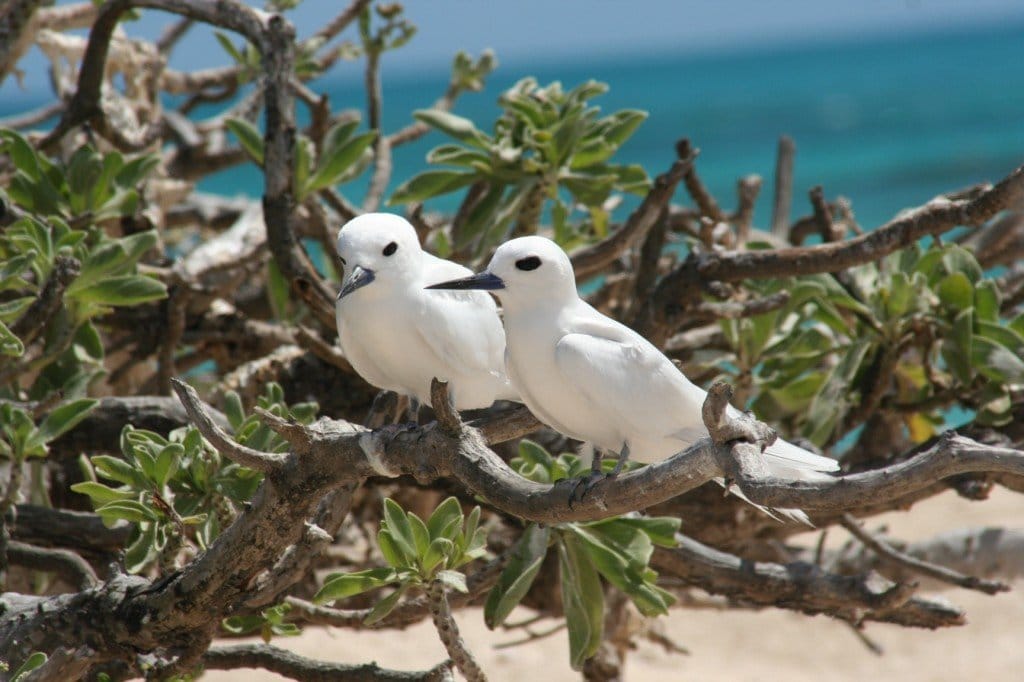 A pair of White Terns (Gygis alba)
A pair of White Terns (Gygis alba)
White Terns are found across the Pacific Ocean as well as more restricted populations in the Indian and Atlantic Oceans. They breed on small coral islands and hunt for fish and squid in crystal blue tropical seas.
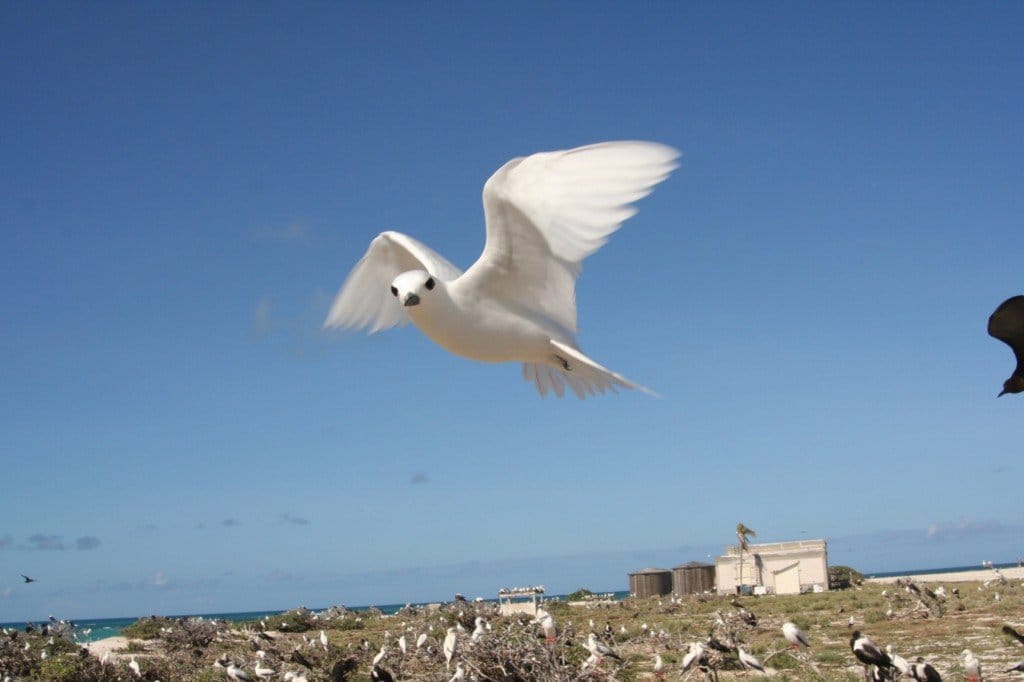 White Terns on Tern Island would sometimes float by silently and regard you with great interest before floating off again.
White Terns on Tern Island would sometimes float by silently and regard you with great interest before floating off again.
It is the breeding of White Terns that is the most remarkable aspect of this species. They construct no nest, instead laying their egg on a bare branch, usually in a slight depression, a fork in the branch or the midrib of a palm. Where available they may also nest on rocks in cliffs. It is thought that the absence of nesting material creates a resulting lack of nesting parasites, which compensates for the increased risk of egg loss due to, well, the egg rolling off. Due to this danger White Terns will remain on the nest even when approached, although they are more likely to flee when nesting on rock.
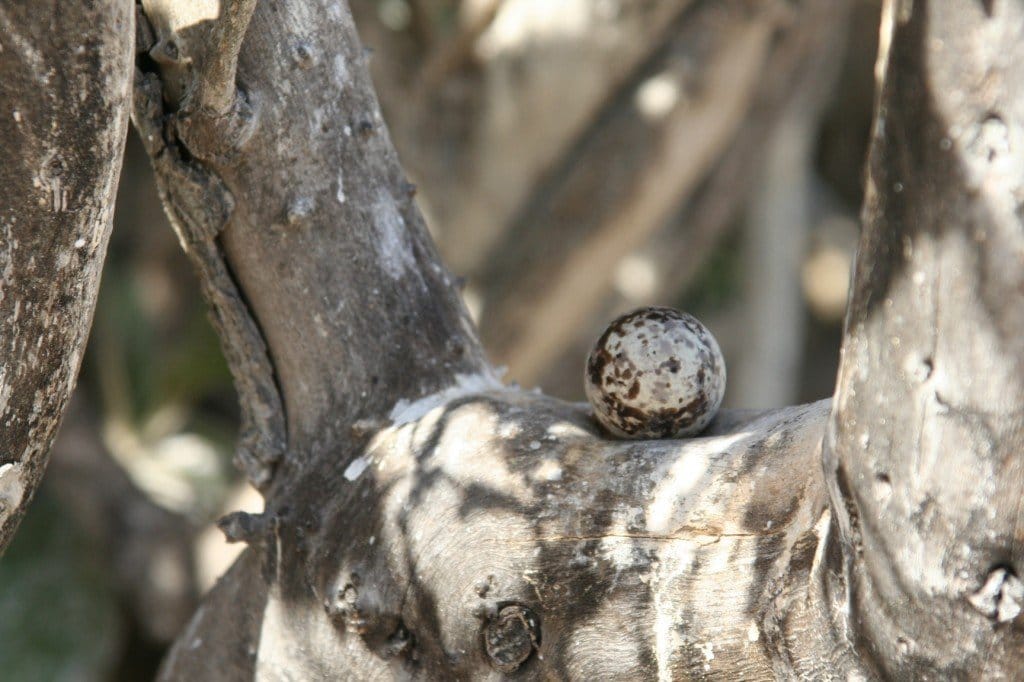 What passes for a White Tern nest.
What passes for a White Tern nest.
Having hatched the chicks have strong claws with which to grip the branches in order not to get dislodged; a fact I can testify too having once had to remove one in order to do some work!
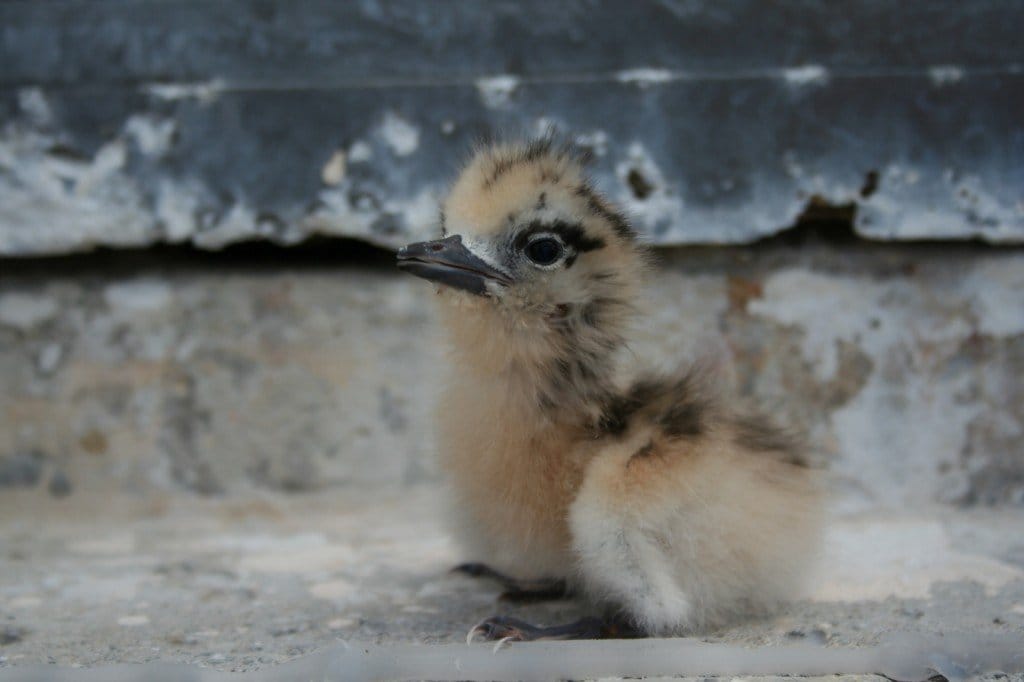 A very young chick on a building ledge.
A very young chick on a building ledge.
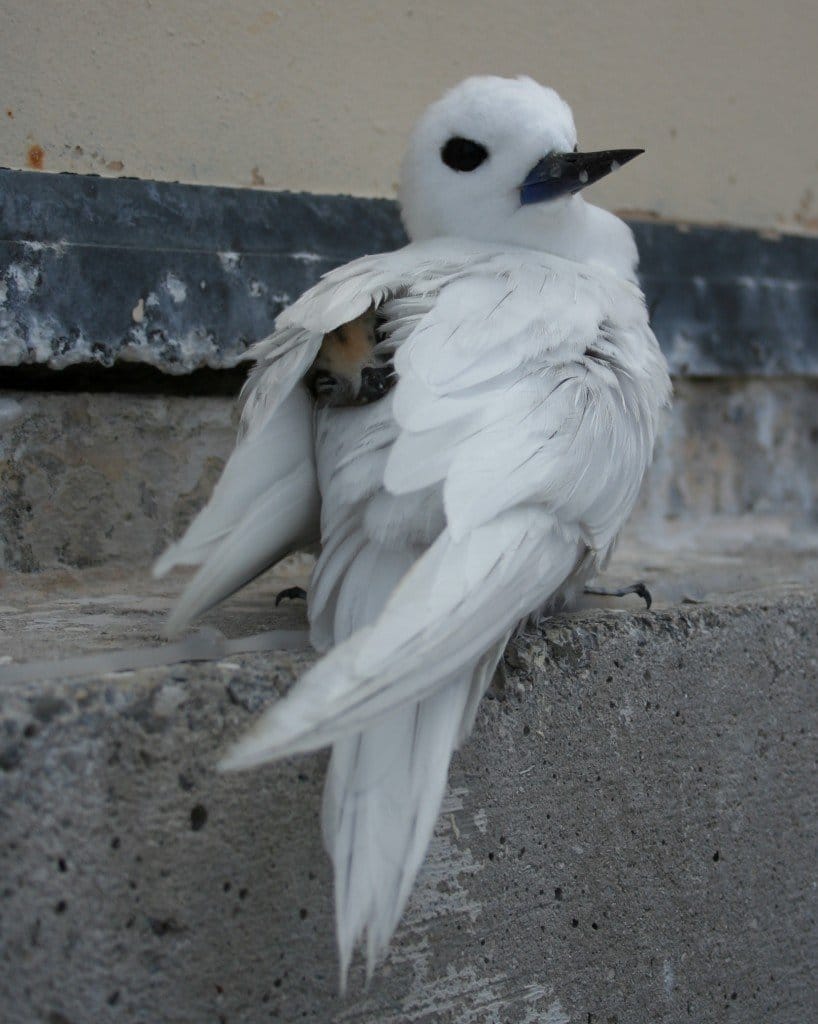 Brooding the younger chick. In my opinion this is the best photograph I have ever taken.
Brooding the younger chick. In my opinion this is the best photograph I have ever taken.
***
This post has been submitted to Bird Photography Weekly #153. Go check it out!
If you liked this post and want to see more great images of birds make sure to check out 10,000 Clicks, our big (and growing) page of galleries here at 10,000 Birds.


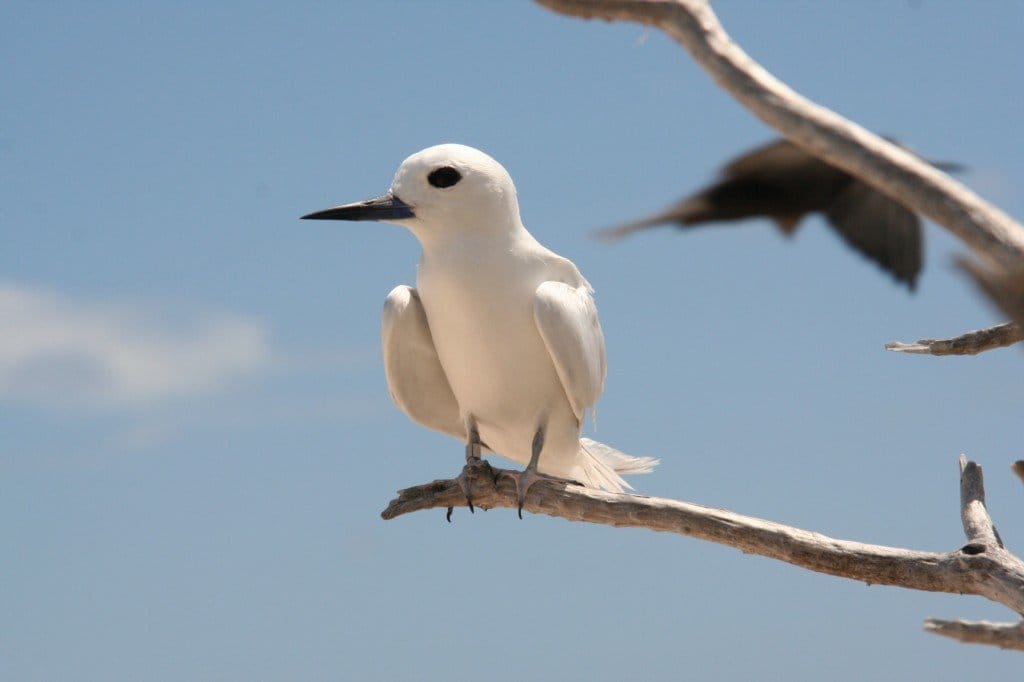
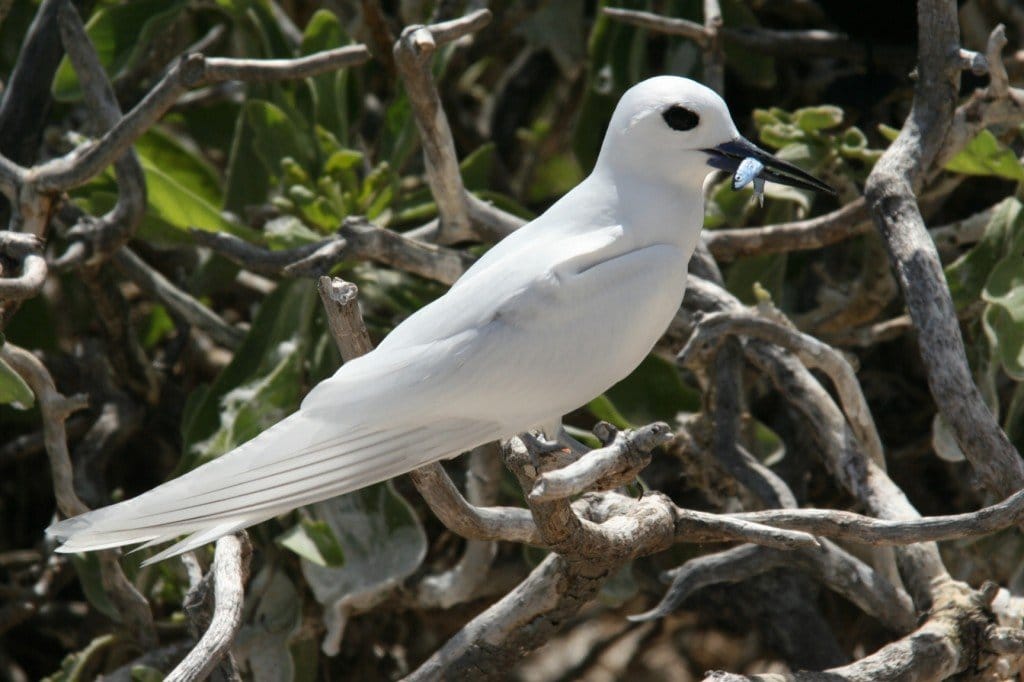
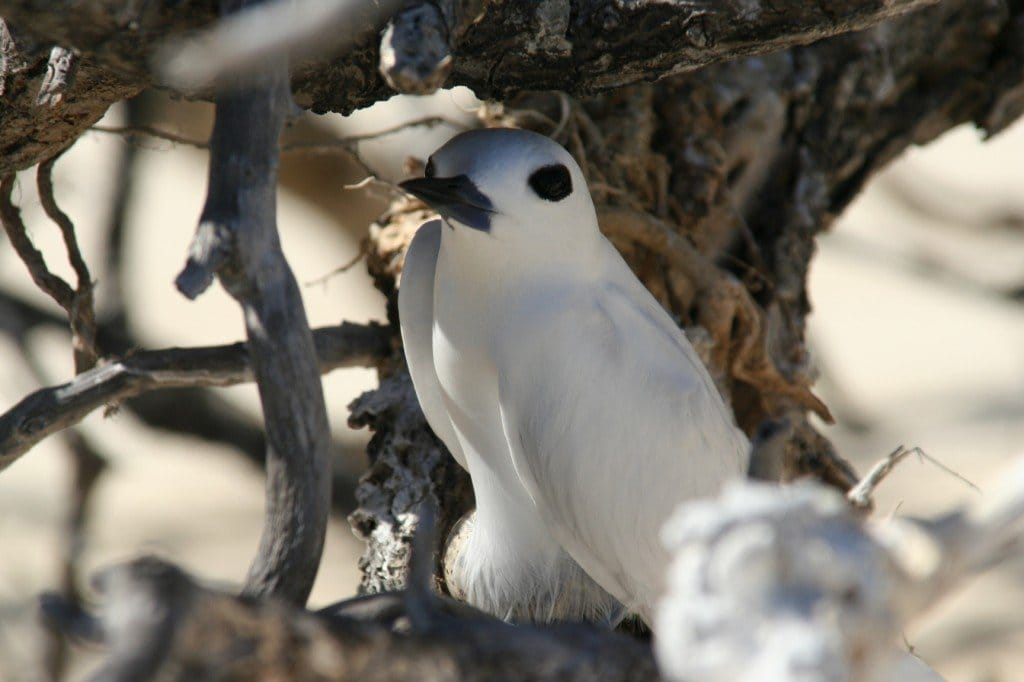
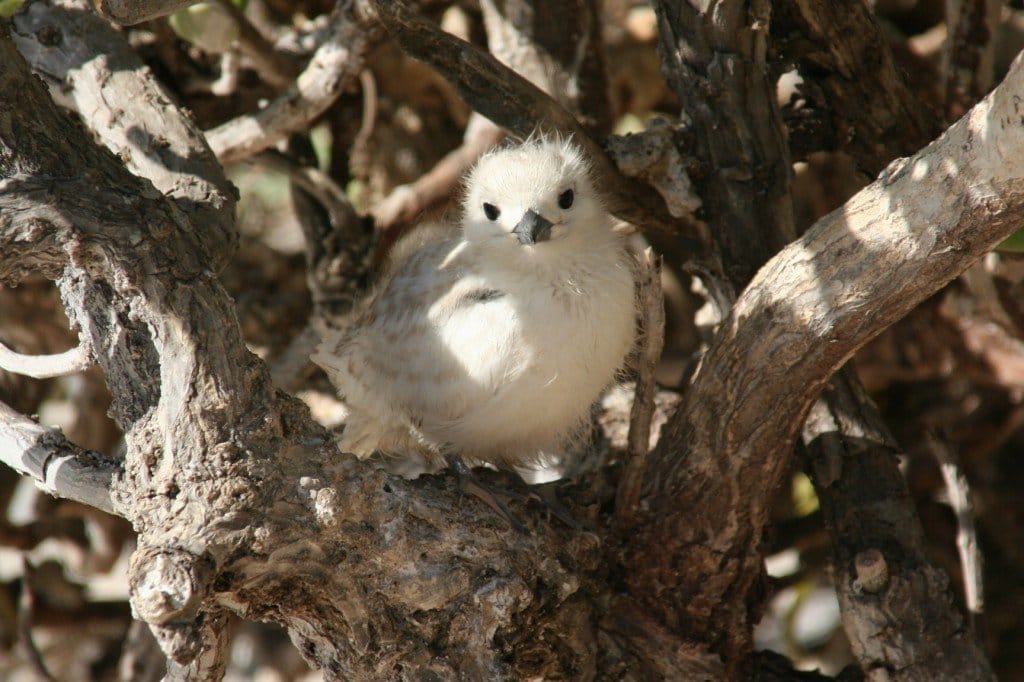











I want to crawl under that wing and snuggle too…
GREAT POST!!!1!!!
Sorry for shouting but, well, baby Angel Terns? What more can a birder want?
Angel Tern is nice, but many people within its range might not really appreciate the name as their respective religions don’t feature winged humanoid after-life forms. I like White Tern for the understatement the name stands for, and which is apparently (I’ve never seen one) a fitting characterisation of the species.
And that last photo certainly is remarkable.
But, Jochen, White Tern? That’s racist!
Black Tern.
Brown Noddy.
White Tern.
Yellow (-billed) Tern.
If a group of birds insults all ethnic groups in equal ways, can it still be considered racist or just malicious?
Darned terns with their racism.
And, again, Duncan, I just love this post.
Yeah, that last picture gets 5 stars…I definitely dont have any shots like that from living on Midway.
They way they move they could almost be called Ghost Terns.
That’s a GREAT last photo! Well done!
Amazing, the last photo, especially!
This is an incredible post Duncan! Bravo! I like Ghost Tern but White Tern will suffice.
Your photos of this beautiful bird are excellent and I think you’re right, the chick under the wing is to die for! I personally like the “nest” with the egg photo too 😉
Very nice post Duncan. Is it just me, or do they look like a bird drawn by a young child. Its the beak and the large eye.
That last photo is remarkable!!!Thank you for sharing it.
We call them Fairy Terns here in Honolulu. There is a group of 9 I see from my condo kitchen window every morning. They are so graceful which makes their croaky little call even more unusual. They come sit in our huge banyan tree for brief moments. I love their black eyes and sharp, pointy bills. Did you know they have ridges on the roof of the mouth to hold fish in place? They are extremely curious and will hover over dogs in parks and sunning cats in the yard and pursue model airplanes? Marvelous creatures right here in a densely populated urban area.